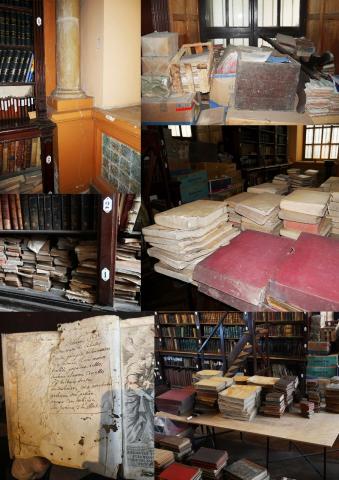Aims and objectives
This project aims to build on a previous project to locate archives and collections of sound materials on expressive culture (music, dance, festivals and oral traditions).
The previous project only aimed to locate sound materials. It was later learned that numerous folklore scholars maintained large collections of old photographs and super 8 films. No one else is trying to locate and preserve these audiovisual collections. If there is no speedy action, these materials will be lost for good.
There are numerous collections of audio tapes, video tapes, Super 8 film and photographs in danger, deteriorating, getting lost, or just being thrown away by the uninformed heirs of these collectors. Research trips have confirmed this, and a project aiming at the preservation of these collections is urgently needed. They remain stored in family homes in several regions of Peru, mostly in the capital city, Lima. Some of them are deposited in small provincial institutional archives without adequate conservation facilities and environment.
The work will be primarily in Lima. But there will be visits to other cities/regions of Peru: Cuzco, the ancient Inca capital; the Mantaro valley, probably the most “modernized” intermontane Andean valley inhabited by one million people; Huaraz, known as the callejón de Huaylas for being surrounded by two mountain chains, the north coast, and the region of Cajamarca, frontier to Ecuador.
The project will be based on some 20 years of experience in this field. Collections will be located, deposited in a central archive in Lima, and copied.
Outcomes
The project succeeded in digitising the located audiovisual materials and submitted to the British Library 125 DVDs with video and film footage of traditional performances, 4,095 digitised photographs and 9 CDs of traditional music recordings. The Catholic University of Peru also holds a copy of the material.
The regions of Cajamarca, Ancash and Junin were covered by the digitised collections and additional collections were also located in those regions and in Lima, Puno and Cuzco for future projects. Many collectors agreed after a first interview to give their materials to the field teams for copying, which was surprising as many were kept as cultural treasures. The original materials were collected by field teams, transported back to Lima for digitisation and then returned to their original owners.
The majority of the material had not been catalogued so the project staff had to create listings of the material with the help of the collectors, prior to the digitisation process. The project was able to digitise video tapes, in both VHS and Betamax formats, photographic materials such as slides, prints and negatives and audio material mainly held on reel-to-reel tapes. The digitisation of 8mm and Super 8 film rolls was undertaken by private companies.





